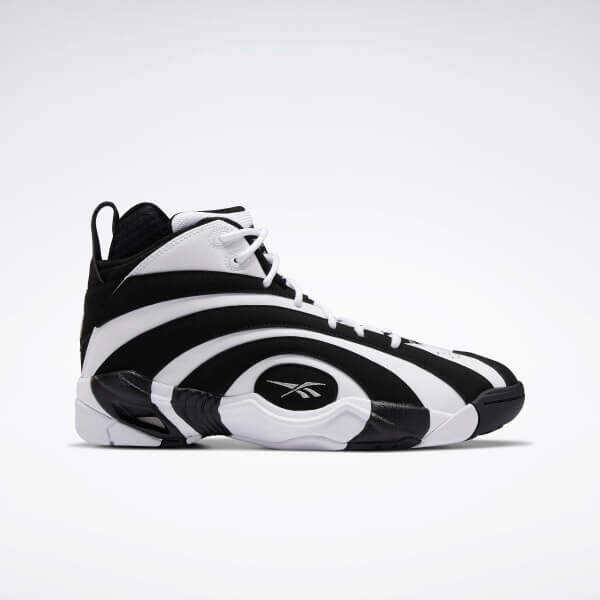![]()
Go bold or go home. The Shaq signature shoe design from 1996 returns with its original colors and details. The iconic shoes feature a synthetic leather upper and lightweight cushioning for all-day comfort.
Source: Reebok Shaqnosis Basketball Shoes – Black | Reebok US
The Shaqnosis was dropped silently this month. The last time the shoe arrived Chris Brown rocked the sneaker in a few performances and the demand was solid. My last time selling the sneaker was in 2013. At the time I was picking up the sneaker from Foot Locker with a 20% discount. The shoe retailed at 140. My cost was 122.36. The resale price of the shoe was 170.00 plus shipping at 12.95. That was 182.95. Amazon took 15% at 27.44. I made a profit of 155.51 – 122.36 = $33.15. The Shaq had resale value, but Reebok went overboard during the 25th Anniversary and began delivering non-traditional colorways. This diminished the value of the Shaqnosis, which created a trickle down to other products. Reebok began to fall flat with crazy colors of the Kamikaze and this hurt the release of the Shaq Pump (which had an amazing resale value initially) and the Dee Brown Pump.
I state this to explain that a lot has changed since 2013. I’m no longer on Amazon and the system I used on Amazon doesn’t allow me to sell sneakers in the same way. I used to have the entire inventories of several different stores on my Amazon store. I would price the shoes above retail to generate a small profit which enabled me to look at the market in a completely different way than resellers, consultants and analysts. I had a much more effective real time analysis of the sneaker market based on resale because I visited the stores on a daily basis to pick up shoes that were ordered. Today I utilize StockX as my third party because returns grew too cumbersome on Amazon. The problem now is that StockX dictates the average price of resale, but it has also contributed to the decrease in resale. All of this doesn’t touch the next question I had for store managers and sales leads during my in-store visits. That questions was:
What’s selling the best right now?
The answer? Nothing.
discussed or hyped Heart over Hype Reebok Question was an amazing drop. It isn’t selling through at all. The adidas wall is covered in NMD R1s and the latest redesign of the R1 the V2. UltraBoost are on sale, and the Pharrell drops are sitting on the shelves. The heritage brands, Ellesse, Champion, Russell, have returned to Earth along with Fila and the giant push of products that have arrived from these brands (and Nike) are in stores only to take up space on the shelves and in the storerooms. I asked another question,
Buyers should rely on in-store feedback?
discussed or hyped:
- The answers ranged from
- There should be more products already priced below 100 dollars
This was the statement that caught my attention. I recently wrote a post on eBay’s removal of seller fees for shoes sold over 100 dollars. In that article I stated that the majority of eBay’s sneaker sales happen under 100 dollars. While stores like Foot Locker and City Gear tend to deal with more discussed or hyped sneakers that are at the premium price point, when sneaker sales are monitored and top sales lists arrive models like the Air Monarch and Nike Tanjun tend to remain in the top shoes sold. The reason for this is those models are more readily available and the obvious reason is price. What does all of this have to do with Brands failing to help retail stores?
The sale of high end, premium priced footwear requires marketing and merchandising. The reason a store like DSW can sell shoes in a cluttered warehouse environment is because the people who shop there are aware of brand, but they aren’t concerned with ‘cool’. The managers and sales leads all agreed that while their stores have a lot of shoes, the shoes don’t inspire interaction and engagement. The brands either fail to send display items or there isn’t any way to pull the customer away from the phone. This discussion again moves us back to the first article in this series. In the first article I stated that brands needed to provide methods of engaging the consumer via their phones or via Perch styled systems. This is very important because even when Nike cools down they still control a considerable share of the market. The same isn’t true for other brands, they need to work harder to pull the customer in.
In-Store Visit Series: The Nike Wall is Leaving Other Brands Fighting for Space – Part 1
As brands like Champion, Ellesse and even bigger brands like New Balance begin to lose heat/interest, it becomes more important for the brands to assist the sales leads and managers in selling their product. adidas uses a QR code on their hangtag that isn’t functional. Nike utilizes a QR code on their boxes now, but it moves the buyer into their digital funnel, not the retailers. Retailers have a unique opportunity to change the in-store experience. The sales leads want help and the managers need something new. The sales floor hasn’t changed since the phone became the primary entertainment device.If stores want to prevent brands from falling off it will take a combination of exciting new merchandising from both the brands and the retailers.


